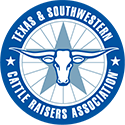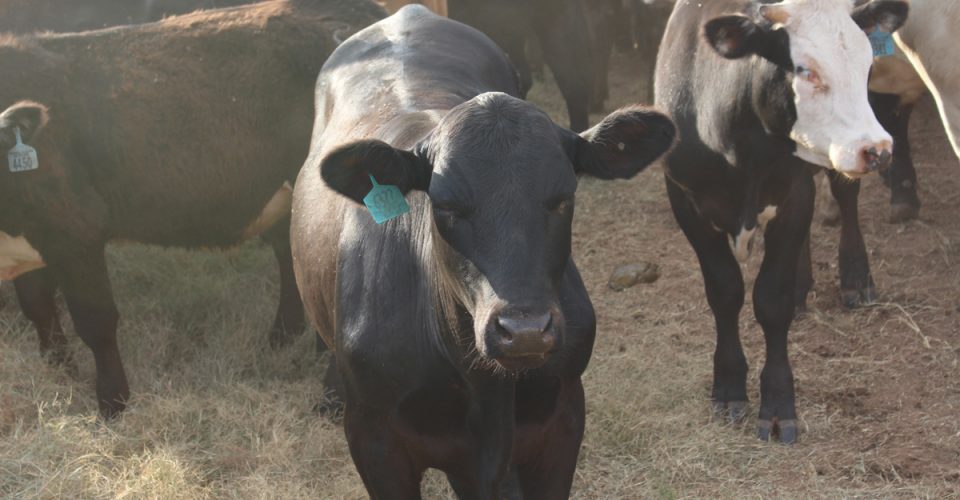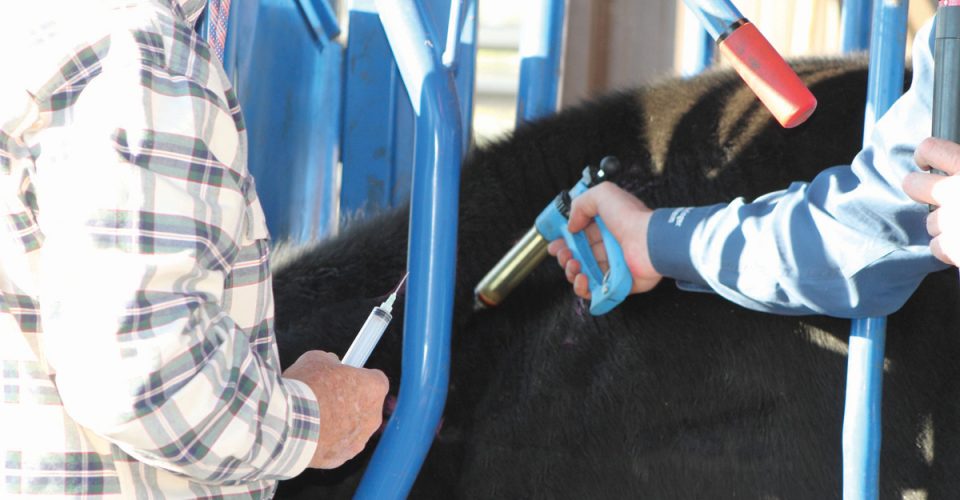Treat, Call or Haul?
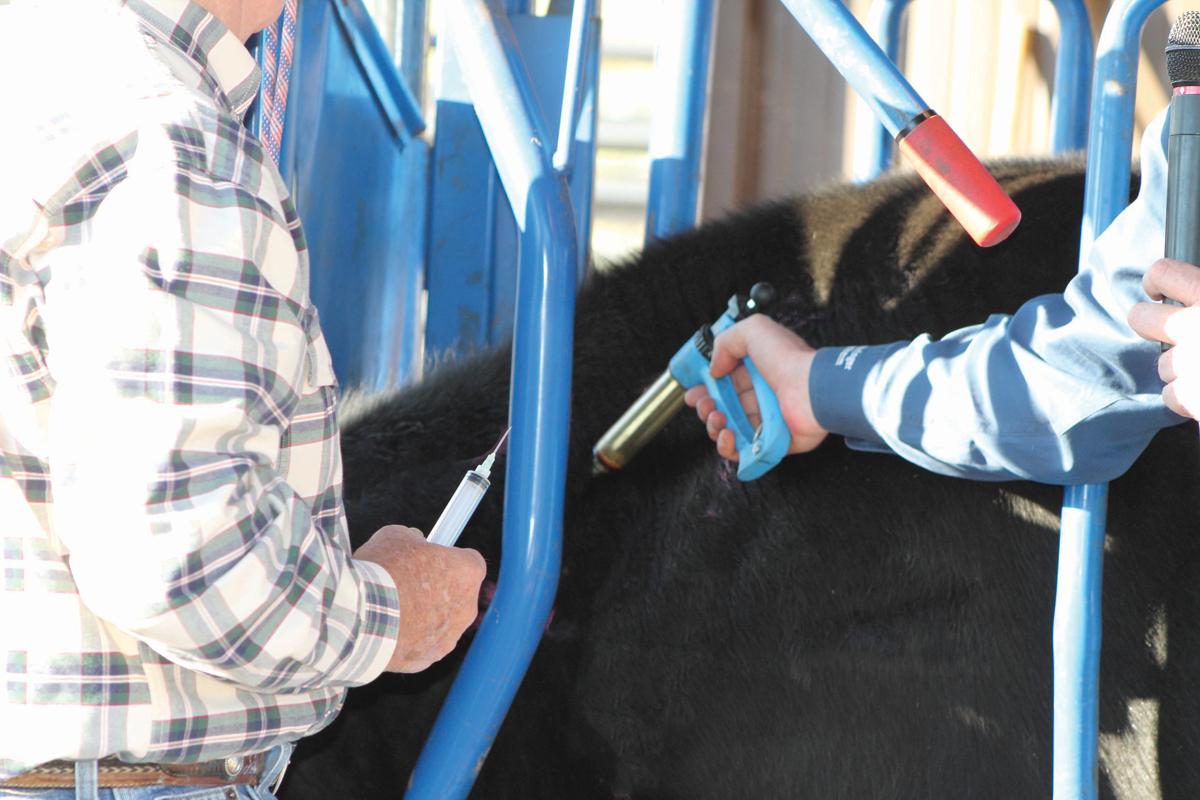
What to do for sick or injured cattle at the ranch.
By Kristin Lewis Hawkins
If you have cattle, you will eventually also have sick or injured cattle. As stewards of livestock and the land, ranchers are some of the best advocates for keeping our animals healthy and whole. We do our job, so they can do theirs. However, there will always be a few bumps in the road, so part of our job is also to make sure we are prepared with enough knowledge to know what to do in case of illness or injury. It’s also our job to know what we don’t know, and when it’s time to call the veterinarian or back up the trailer for sale day at the livestock market.
Prepare for the unexpected
The first — and possibly most important — tool in every livestock owner’s toolkit should be a basic understanding of Beef Quality Assurance guidelines. The program is free, available online and in-person one-day sessions. Certification will show you the best management practices for cattle producers to strengthen consumer confidence in beef as a wholesome food product. Visit texasbeefquality.com for more information and a schedule of in-person sessions.
The next item to check off your list is to have a regular large-animal veterinarian on speed-dial. Even if you never have to call him or her, you’ll have an established relationship with someone you trust and who knows your operation.
If you don’t already have one in mind, ask your neighbors or the folks at your local feed store or sale barn. There are some areas where large-animal vets are few and far between, and it may be more difficult to track one down. Try contacting your county’s Texas A&M AgriLife Extension office or the Texas Veterinary Medical Association for information on large-animal clinics in your region.
If you do have a regular vet, put their number in your phone AND keep it written down in a few secure places. On the fridge, by the kitchen phone, in a notebook in your truck — anywhere you’ll be able to get to it quickly. Whether you’re dealing with a pasture near the house or in the next county over, you’ll have their contact information.
It is hoped that if you have cattle, you have a medical kit dedicated to their needs. Keep a kit fully stocked and ready to go in a toolbox or some other mobile unit that can be stowed in the truck or carried into a field. Remember that emergencies or illnesses rarely happen at a good sunlit hour, next to the barn or when it’s not raining, so keep those flashlight batteries fresh.
Stay safe and know the basics
Safety of humans and animals should always be your first concern when doing anything around the ranch or farm. A sick or injured animal can behave very differently than they normally would, so always approach even tame cattle with that in mind.
Use a squeeze chute or other restraining device, if possible, when examining or treating cattle. The equipment is well worth the cost when it comes to treatment, getting a good look at a wound or administering injections. Your vet will thank you, too.
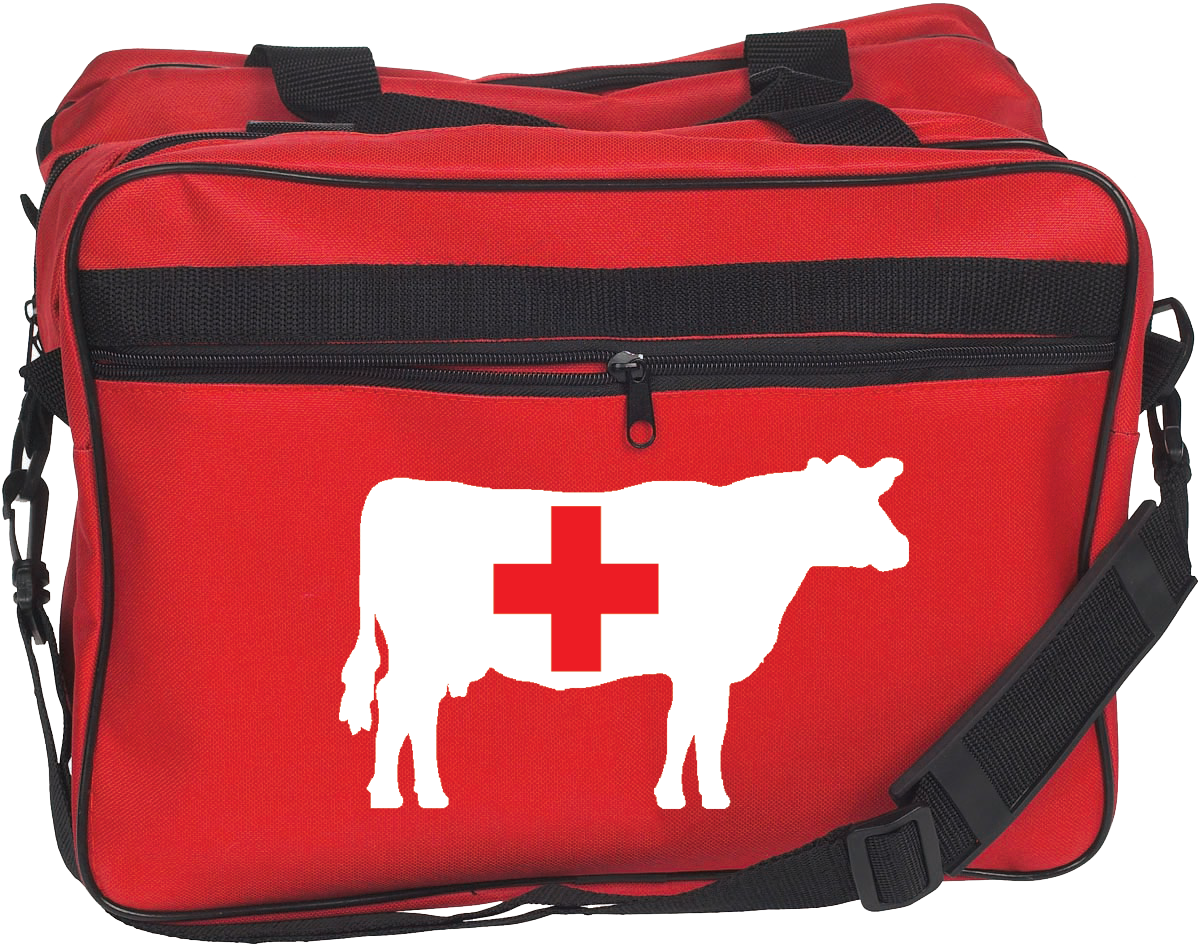
Cattle First Aid Kit
✓ Nitrile gloves in sizes to fit both big and small hands
✓ Gauze in large and small sizes
✓ Digital rectal thermometers you can read in the dark and without your reading glasses
✓ Alcohol swabs
✓ Bandages in many different sizes
✓ Medical tape (Coflex)
✓ Bandage scissors and snips
✓ Towels and disinfectant
✓ A dedicated-use steel bucket
✓ A flashlight or headlamp and extra batteries
✓ Wound spray
✓ Tweezers, forceps and needle nose pliers
Understanding the basics of what is “normal” can help you spot concerns before they become full-scale problems. Do you know the normal temperature range of a healthy animal, and how to take it? How to check for heart rate, respiration (breathing) or what “normal” rumen sounds should be? These are all important clues that can help you figure out whether you’re dealing with an illness or injury, then decide the appropriate course of action.
It’s also handy to know the signs and symptoms of common diseases, illness and injuries. Good herd health management can prevent many problems, but it’s always good to know the potential dangers and what to watch for. Catching bloat early can mean the difference between a happy mother cow tomorrow and an orphan calf tonight.
Check on your cattle as much as possible. This may not be feasible for some operations but being able to observe normal behavior helps pick out when something is just not right. If something catches your attention, but may not need treatment yet, write it down and keep track. If you do need to call the veterinarian later, they will appreciate having as much information as possible.
When you have a problem
If you notice you have a cow that looks ill or one that has an obvious injury, don’t put off treatment.
An illness could spread to other members of the herd. Know the signs of illness. Usually, the quicker you catch a problem, the better the outcome.
First, observe:
- Behavior: Is the animal acting sick (head down, breathing labored, droopy ears) or hurt (lame, hunched back, bawling more than usual). Is the animal eating, drinking and defecating? Does the animal look like it has lost weight compared to its cohorts? Signs of diarrhea? Are there any obvious signs of injury?
- Environment: Were there any recent changes to forage, environment or water? Are herd mates also looking ill or were they ill previously? Did you add any new animals recently? Were they quarantined first? Is there anything new in the pasture, either put there by people or naturally growing? Some noxious plants only grow at certain times of the year and cattle that were introduced to a new pasture in the fall may not have seen it before when it blooms in the spring.
Then, examine:
- Vitals: Temperature taken with a rectal thermometer (a healthy, resting cow averages 101.5° F); Respiration (this may vary with the temperature and stress level, but adults should take between 30 and 50 breaths per minute); heart rate (depending on temperature and stress level, should be from 48 to 84 beats per minute); rumen sounds (listen with a stethoscope for a low rumble a few times a minute).
- Clean the area if an injury is suspected. Look for any unusual swelling, discharge, foul odors or tenderness.
Now, decide:
- Treat? Is this something you can fix yourself? Is a favorable outcome likely? Parasites, simple infections and superficial wounds are problems you may be able to treat with some care and patience. Monitor the animal for improvement or deterioration of the condition. A case of foot rot can often be resolved with a good cleaning, topical treatment and systemic antimicrobial therapy.
- Be sure you read all labels and follow instructions on the use of medications. Using a good product in the wrong way can result in as much harm as the problem you are trying to fix. Obey proper withdrawal time periods and appropriate dosage concentrations.
- Practice good biosecurity measures and monitor the situation for any changes, good or bad.
- If the animal is not improving, it may be time to call the vet.
Call?
Know when it’s time to call the vet or when the situation is beyond your ability. It could be that something has escaped your memory and could be cleared up over the phone. Or maybe that case of foot rot didn’t clear up with the usual treatment, so you’re out of ideas. Call before the situation gets beyond what even a trained professional can control. If caught early enough, a good veterinarian can prevent a wreck. The possibility for success diminishes rapidly the closer an animal is to going down.
Dr. Arn Anderson, Cross Timbers Veterinary Hospital, Bowie, says it is important to meet with the veterinarian to determine your limits on care. They will need to know how long the problem has been going on, how many cattle are affected, how many are dead or sick, and how their response has been to treatment.
“The initial meeting will determine which diseases you need to watch for and what treatments to pursue,” Anderson says. “One dead calf or cow that is saved instead will pay for a lot of vet visits. Think about the cost being divided out over the number of head.”
The veterinarian can then generate a veterinary drug directive and establish a treatment protocol. “Prompt, effective medicine will pay for itself tenfold,” Anderson says.
With the new Veterinary Feed Directive (VFD) rules, many medicated feeds are now required to have a veterinarian’s approval for purchase and use. Keep that in mind when making decisions on when to call. The vet will have to examine your animals before deciding on a course of treatment.
Anderson also recommends taking a video of the situation or injury on your cell phone. If you already have established a good relationship with your veterinarian, a simple phone call or email could save time and a ranch visit. Don’t be afraid to send a picture with a question about what to do.
Your most valuable source of information is your veterinarian. Ask questions and learn from him or her. Communicate and work together to develop a herd health plan and don’t be afraid to pick up the phone or send an email for advice on situations that aren’t serious enough to require a chute-side visit.
And please do not call the vet for the wrong reasons. “Don’t call the vet if what you want is illegal, the animal is not yours, you have no intention of paying or complying and if the animal is not caught,” Anderson advises.
Haul?
Unfortunately, a situation is sometimes beyond what even a veterinarian can fix. It could simply be the end of what you can do for an animal, and the most humane decision is to cull or haul the animal to market.
Prevention of illness, injury and disease in your herd will go a long way toward keeping them healthy. Proper biosecurity measures, a consistent vaccination schedule, good forage and a strong herd health plan will stop a lot of problems before they start. However, it is always good to prepare for the surprises.
Think through what you would do in any given situation. Decide what you know — and don’t know — that would help. Gather a list of resources, information and people to call with problems or questions, including your veterinarian. Then act on a situation with the knowledge that you’re doing everything you can to produce the safest, most wholesome product with the healthiest, happiest animals.
Treat, Call or Haul? is excerpted from the April 2018 issue of The Cattleman magazine.
